Ha’li’la̱x siła̱’a̱sk is the time for harvesting seaweed!
Ła̱’a̱sk [*ła̱/’a̱sk] is the Sm’algya̱x word for seaweed, and we’ve been talking about ła̱’a̱sk quite a bit in our household. Steve has harvested ła̱’a̱sk with his uncles when he was younger, but this is our second year harvesting ła̱’a̱sk together.
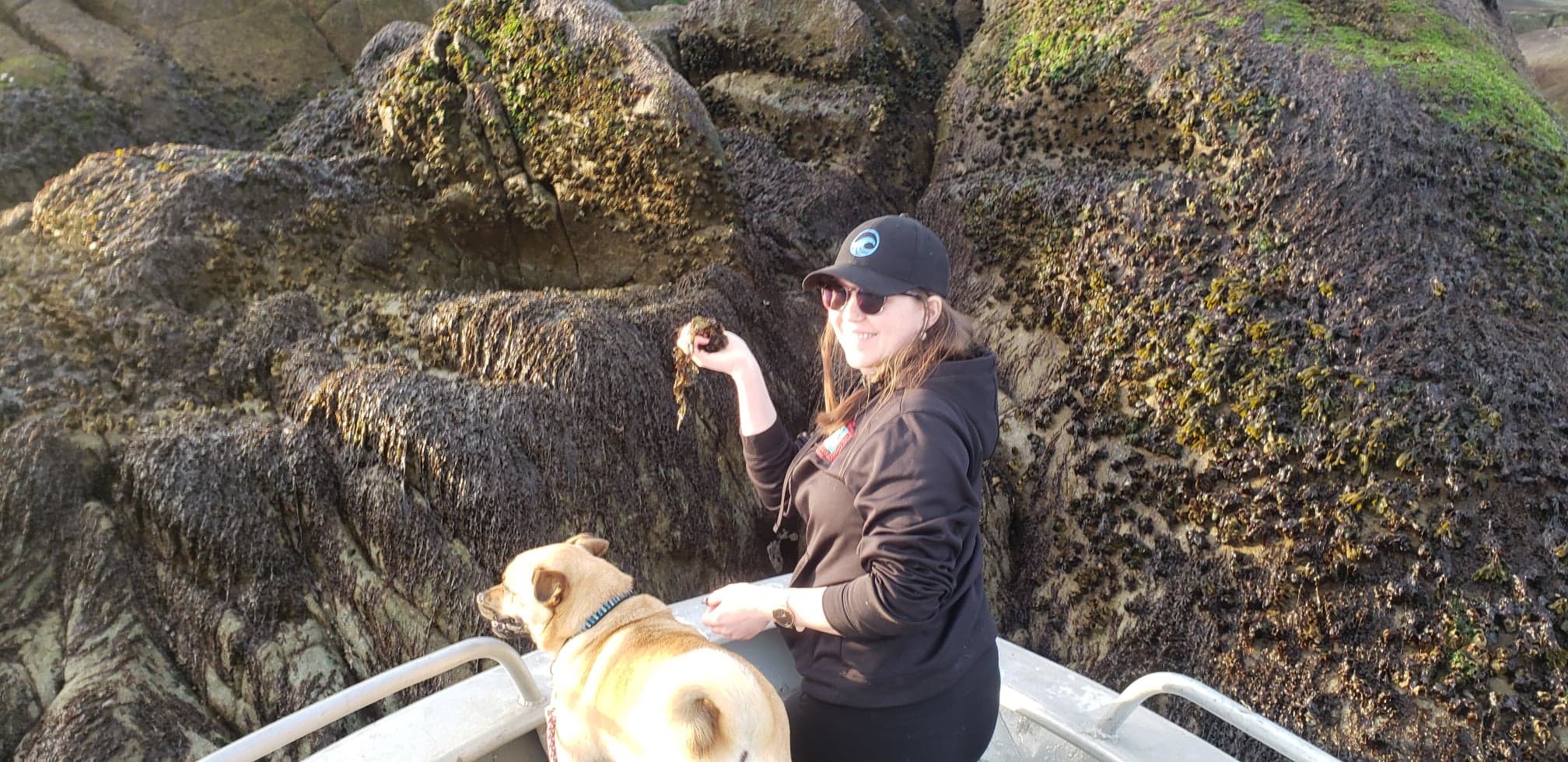
There are a lot of different types of seaweed, some edible and some not so tasty. Where we pick, we usually see several different types of seaweed in one area. The stuff we eat looks black from a distance, and in scientific terms, is called Porphyra abbottiae (sometimes called Pyropia abbottiae).
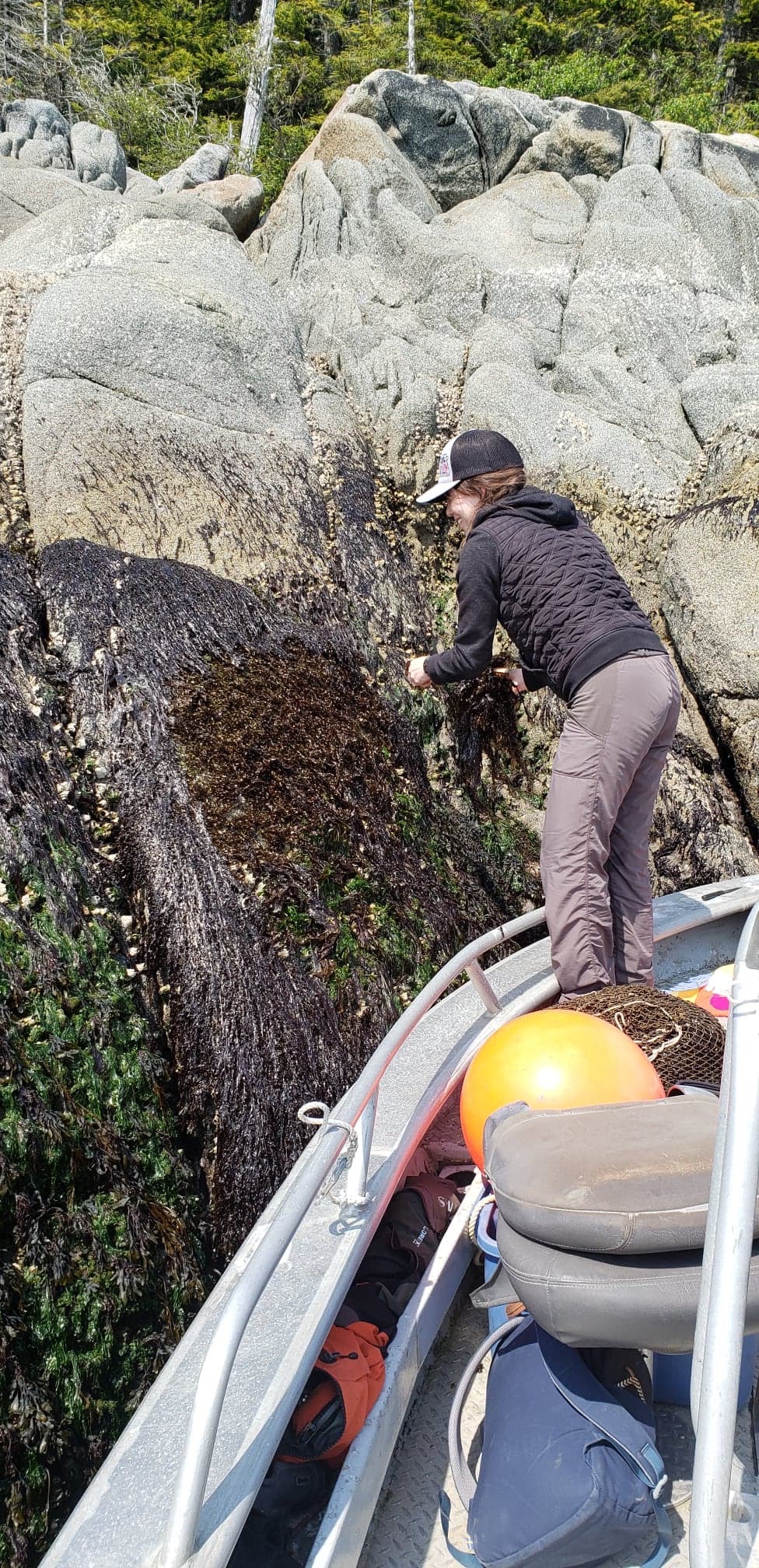 Harvesting ła̱’a̱sk using the boat to access steep terrain.
Harvesting ła̱’a̱sk using the boat to access steep terrain.
Ła̱’a̱sk has a dark hue, and has a bit of a ribbon-like edge on the blade. It has a delicate rubbery texture, and can be tricky to hold onto when you’re picking. Ła̱’a̱sk grows in the low and mid intertidal zone, so when you pick your days to go harvesting, you have to keep an eye out for a low tide, and upcoming sunny weather for drying.
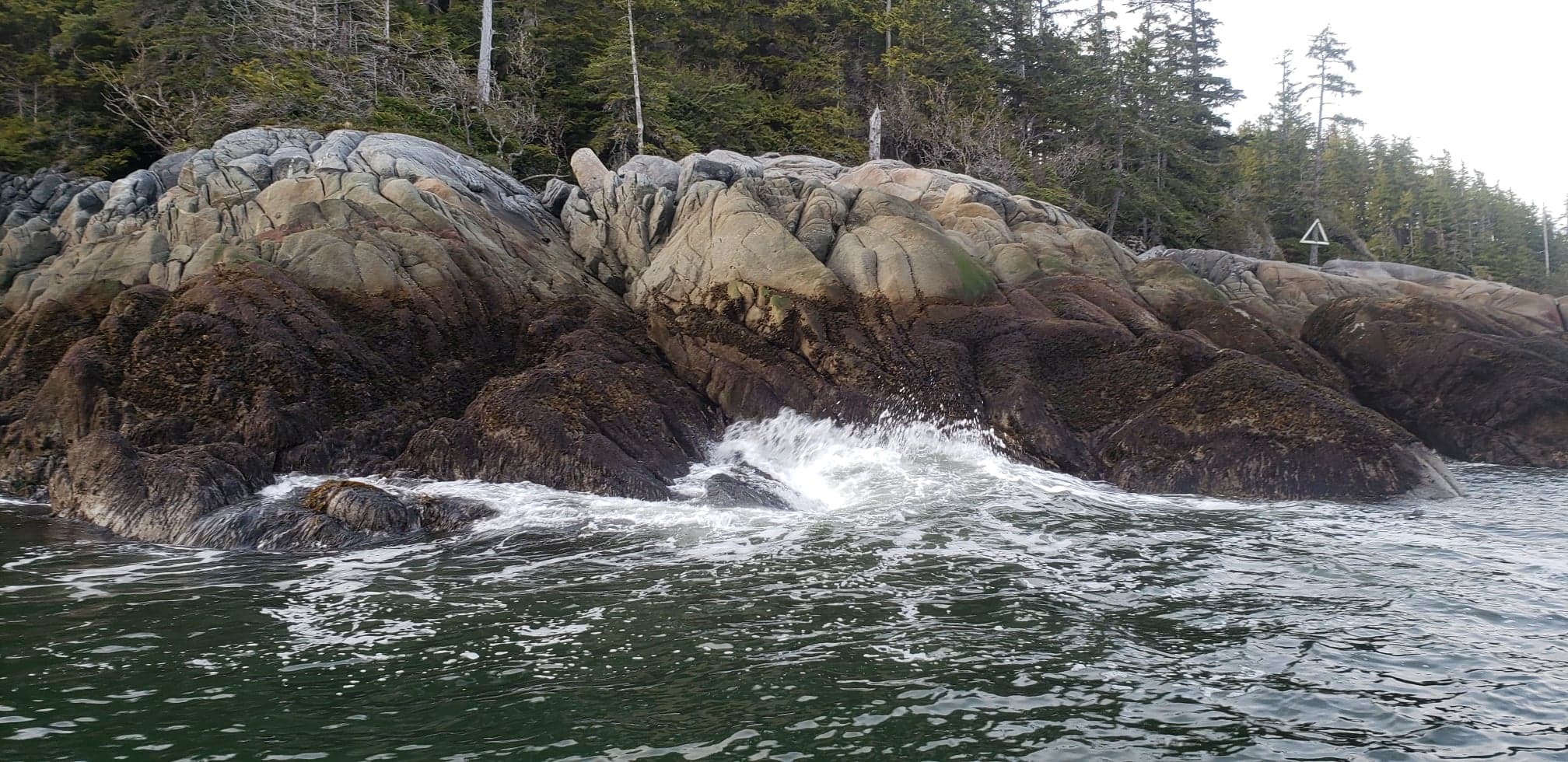
Last year we attempted to harvest ła̱’a̱sk on Mothers Day weekend. But due to weather, tides, and our family commitments – we didn’t manage to make it out that weekend. We harvested later in Ha’li’la̱x siła̱’a̱sk, on May 26th (the last weekend of the month).
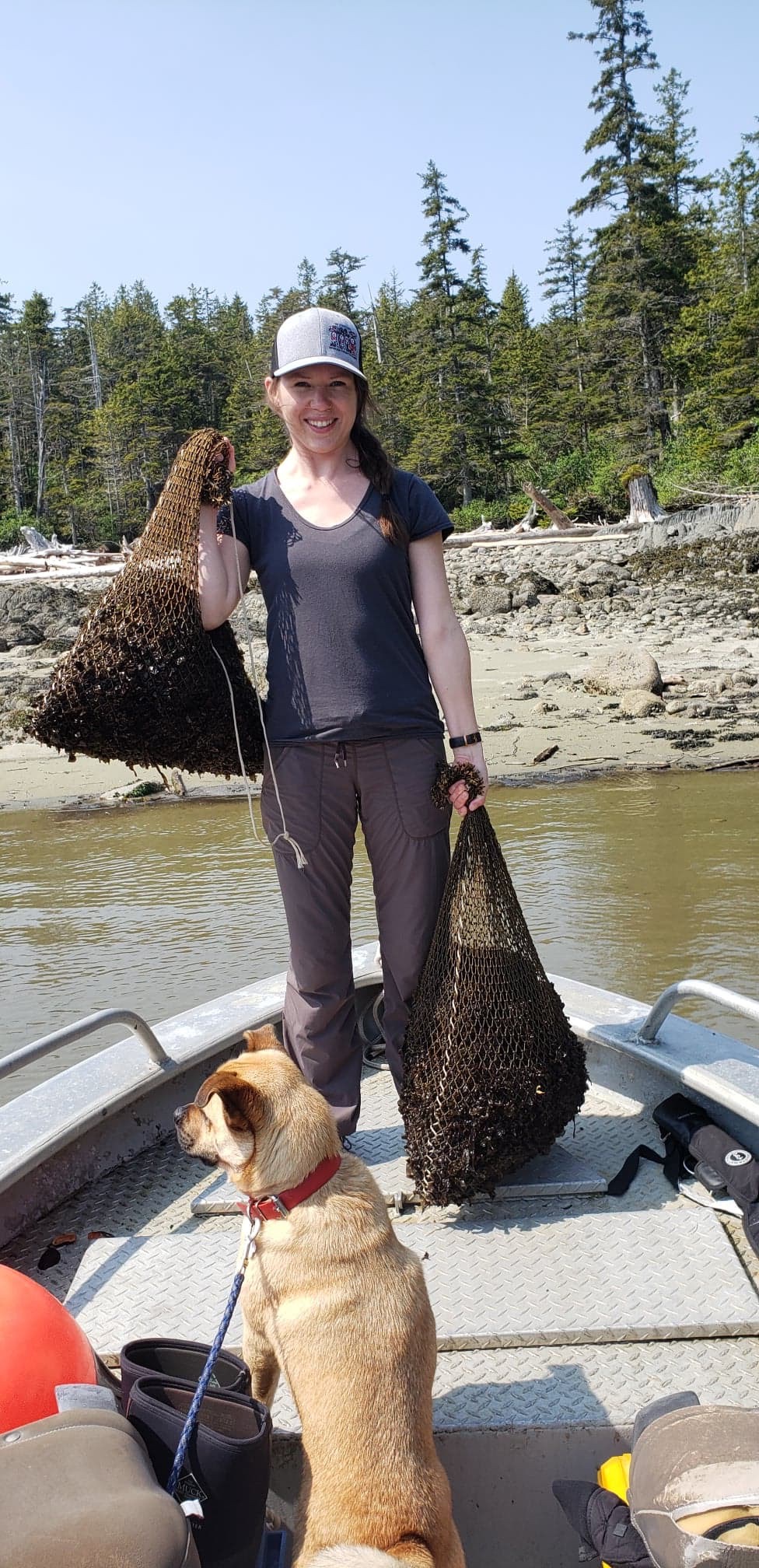
At that time, the ła̱’a̱sk was long and dark. The weather also cooperated with us, and we dried the ła̱’a̱sk into squares the next day (well, Steve dried the ła̱’a̱sk while I was at work).
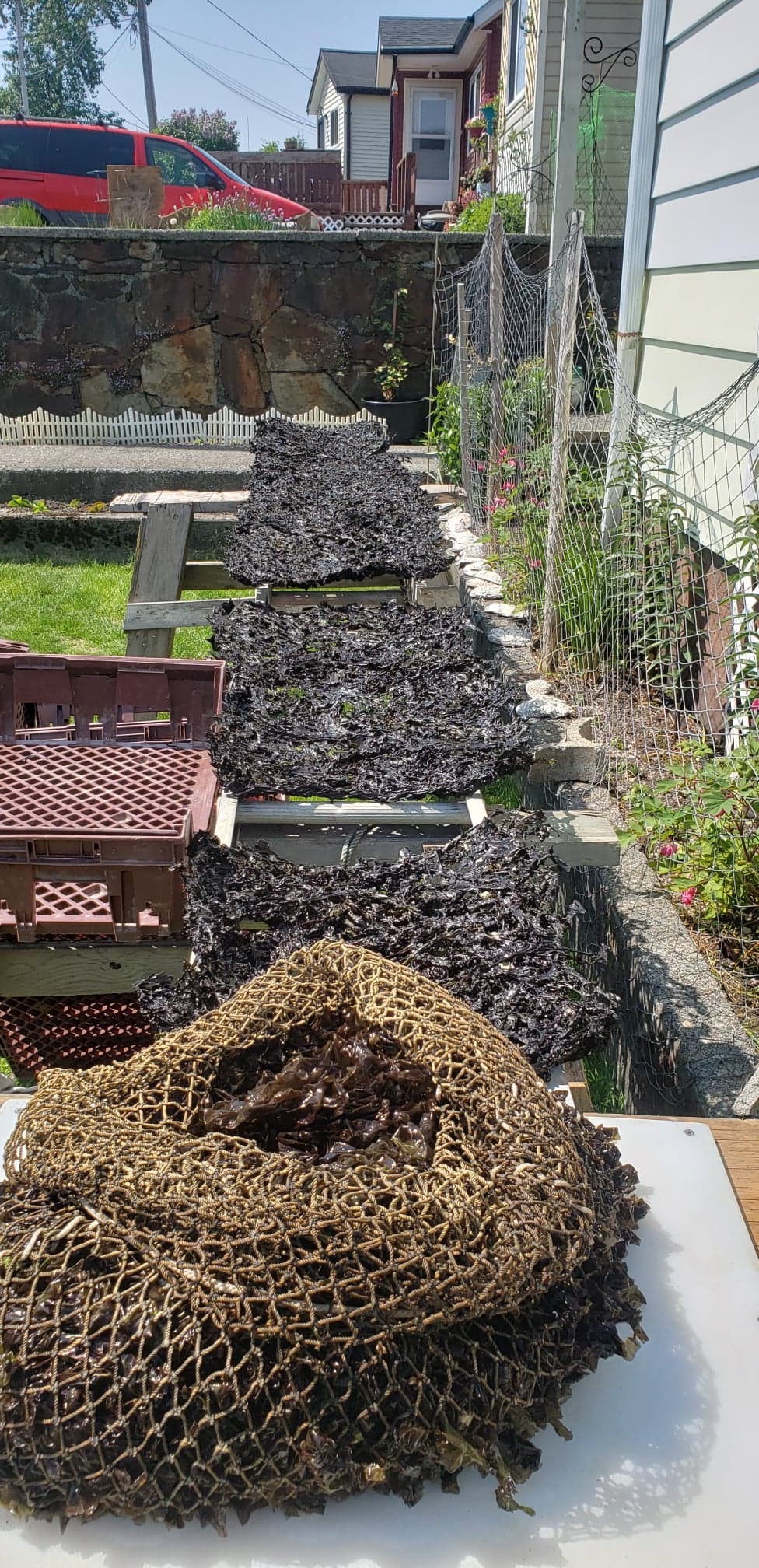
This year, we went out May 8th – just one week into May. We were excited to go out this time because we had been seeing photos of the Lax Kw’alaams and Gitga’at (Hartley Bay) seaweed camps. We went 18 days earlier than last year, and the ła̱’a̱sk (where we were picking) was noticeably shorter in length than last years ła̱’a̱sk. We also had to wait a couple days for a good weather window to dry the ła̱’a̱sk. We did this by putting the ła̱’a̱sk in the fridge for a couple days.
Our method for picking ła̱’a̱sk is to use the boat to access the steep rocky terrain where the ła̱’a̱sk grows. Steve has an open aluminum boat, so we can get right close to the steep rocks. Steve drives the boat, and I pick from the bow (using a gardening foam kneeling pad to save my knees). We’re very careful not to pick too close to where the bow and boat meet, as not to get our fingers caught. Last year, we said we were going to use some old tires on the bow of the boat to protect it from the rough rocks and barnacles below the ła̱’a̱sk, but we ended up recycling the old tires that we had on hand a few weeks before Ha’li’la̱x siła̱’a̱sk.
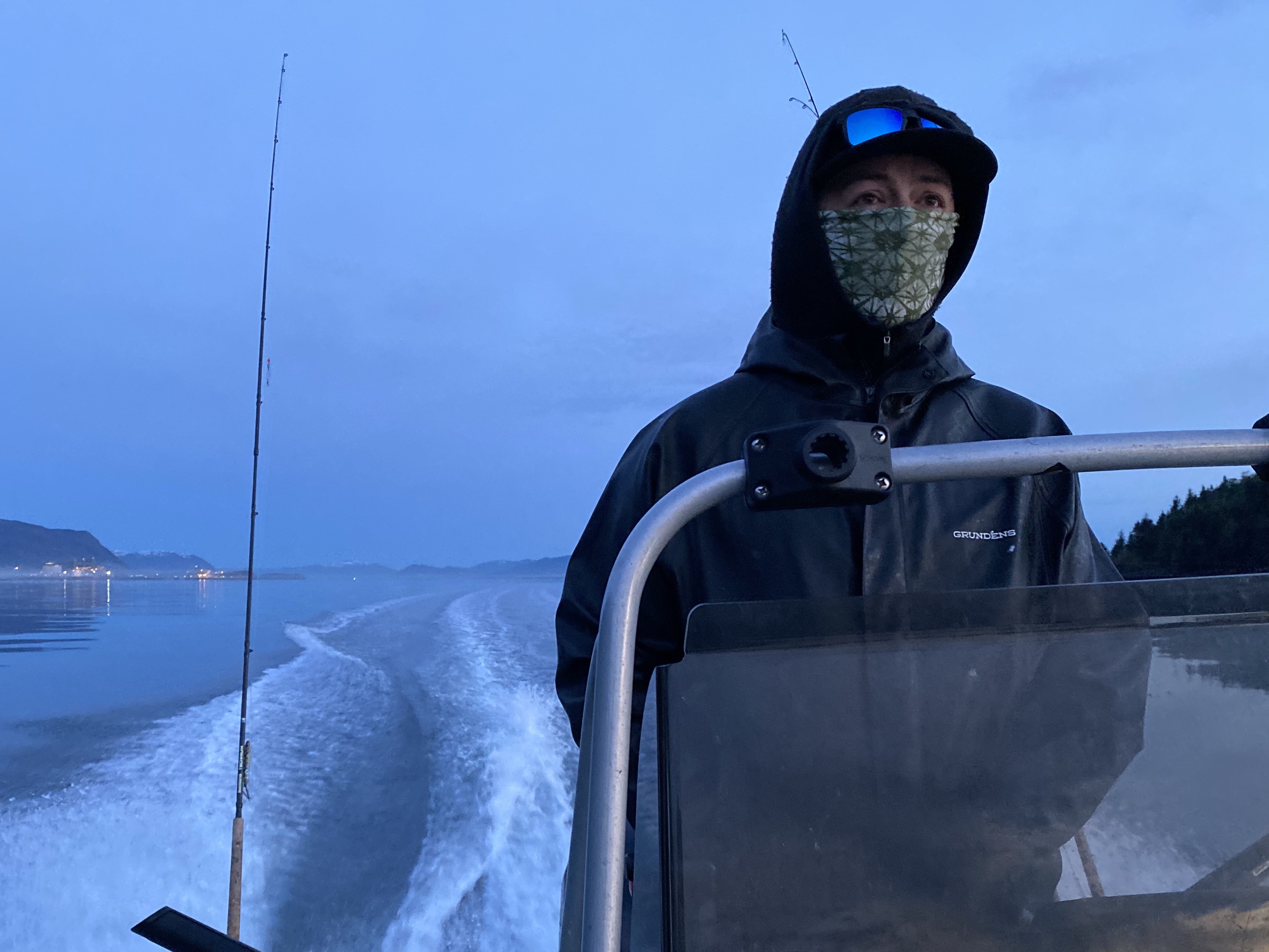
To pick ła̱’a̱sk, I would start by grabbing a handful of ła̱’a̱sk, and wrap it around my fist 1-2 times, until my hand gets close to the rock. Then, just pull the ła̱’a̱sk off the rock, and put it into a seaweed bag. It usually breaks about 2-3 inches from the rock. There are plenty of little barnacles below the surface of the ła̱’a̱sk, and this year I learned NOT to paint your nails the day before you go seaweed picking. I also got a few little nicks on my hands in the process.
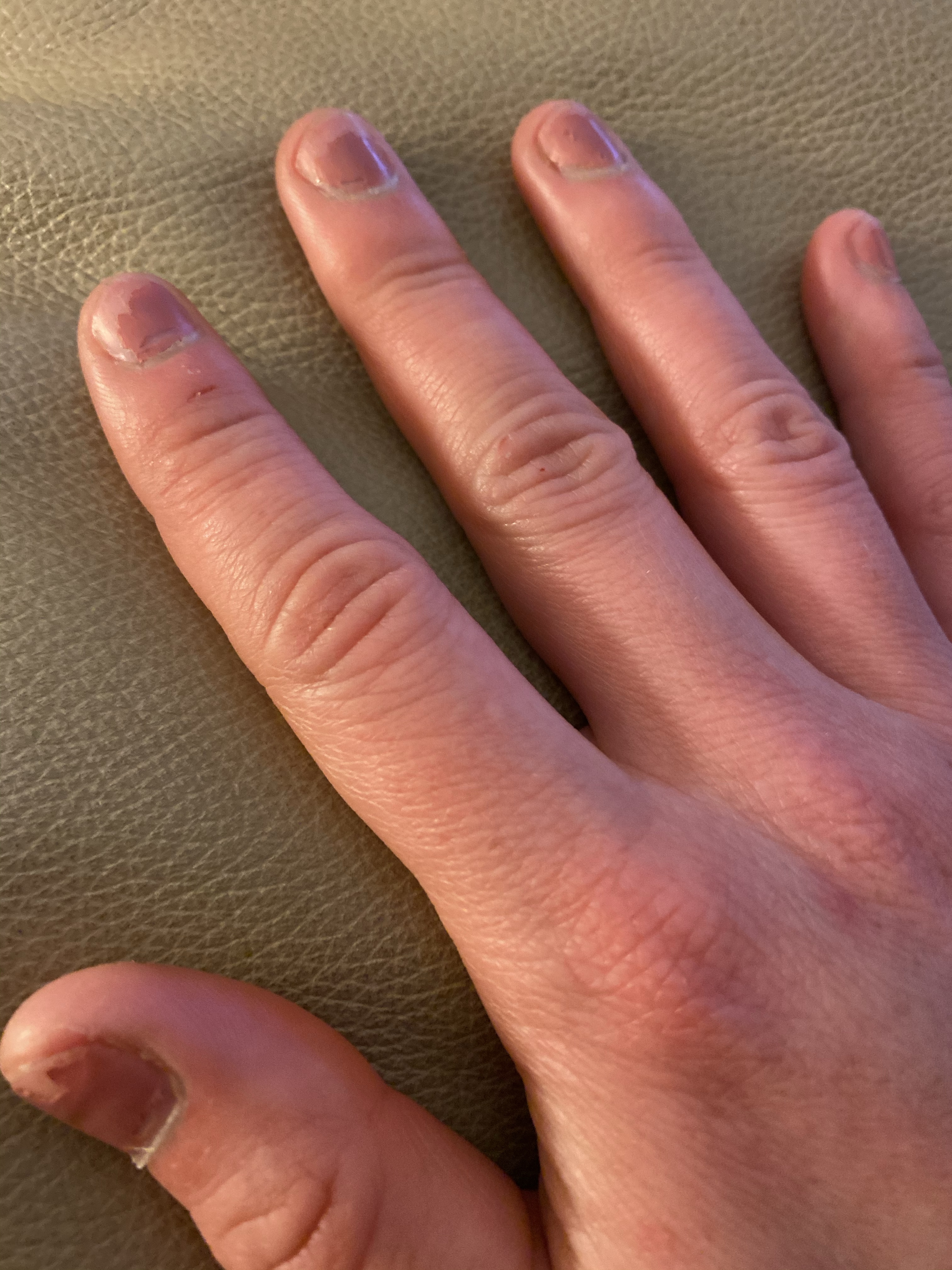
The first year, we used a large mesh bag with large holes in it, but we found that the ła̱’a̱sk lost a lot of moisture in the bag that way. So this year, we used white mesh sacks from Home Hardware to put the ła̱’a̱sk in (I think they’re gardening bags?). The new bags allowed some of the excess water to escape, but not too much – the ła̱’a̱sk retained most of its moisture by the time we were ready to dry it.
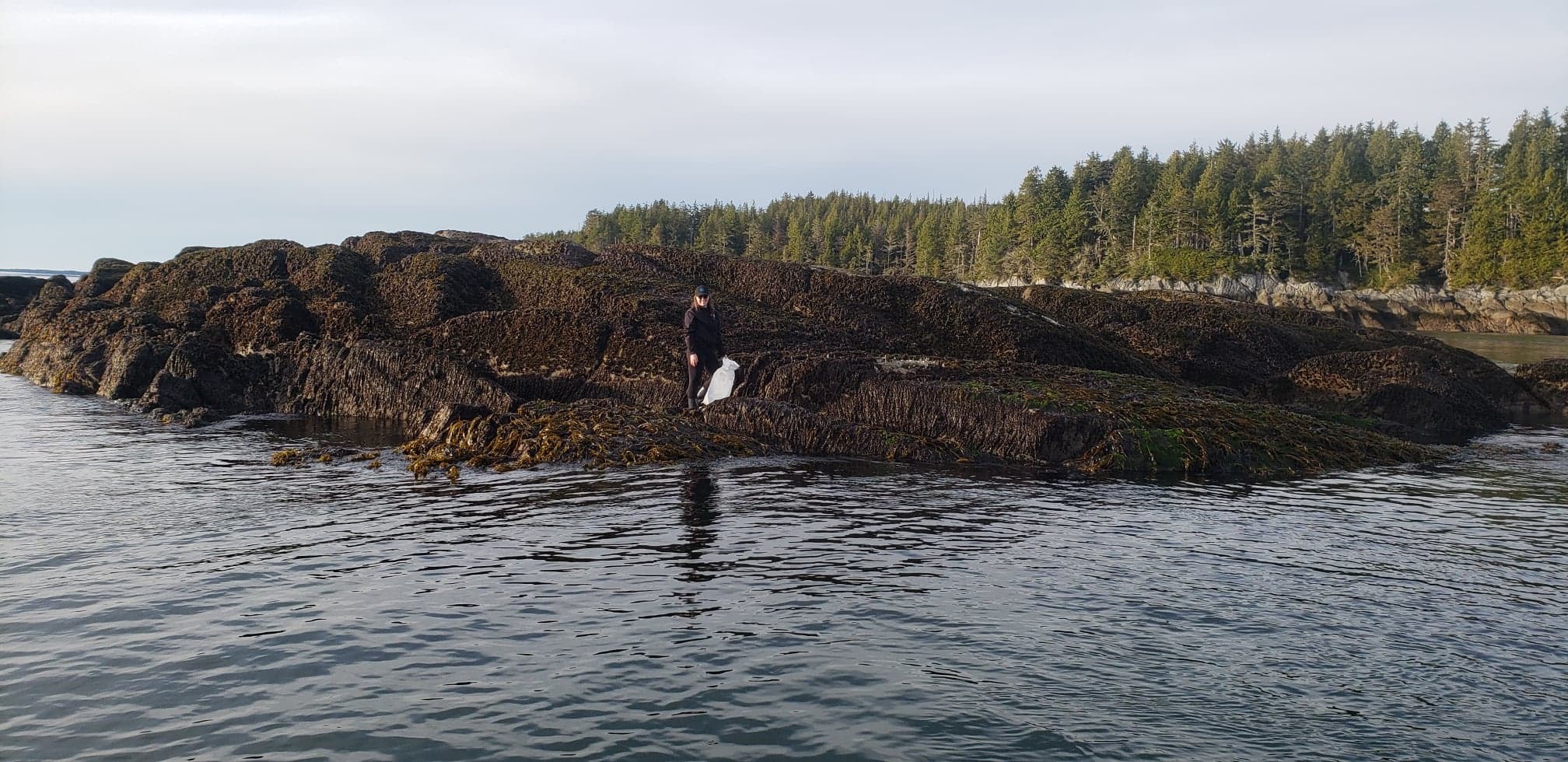
While we were picking, we could see all sorts of creatures below the ocean surface, including dzik’wi’its [dzik/*’wi’its] – sea urchins and ‘yaans [‘yaanst] – sea prunes; chitons . It was kinda crazy how clear the ocean was! We picked a few ‘yaans off the rock to eat later.
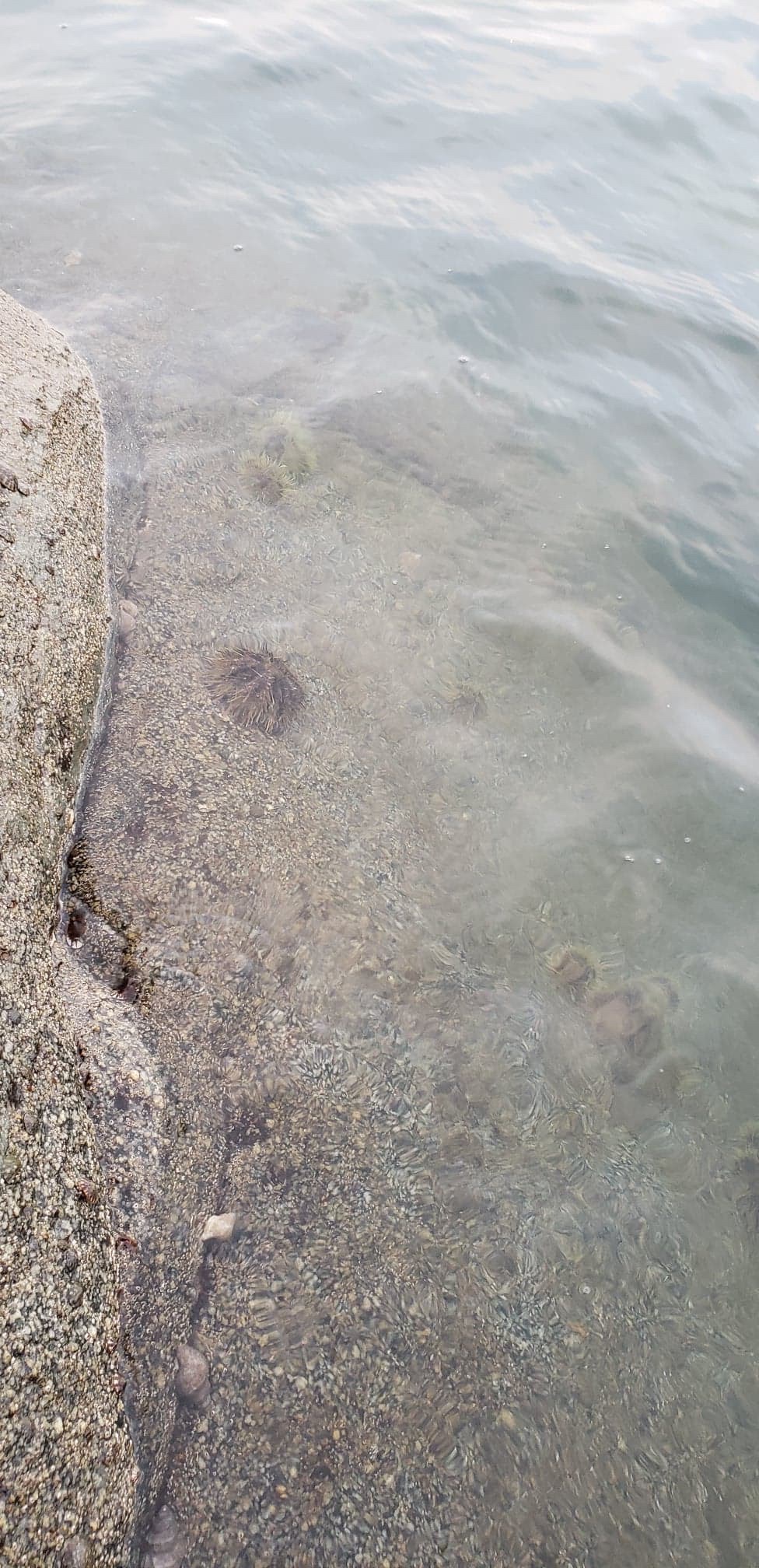
This year, I took on the drying process! And because we picked before Mother’s Day, I spent Mother’s Day processing ła̱’a̱sk squares with my mama.
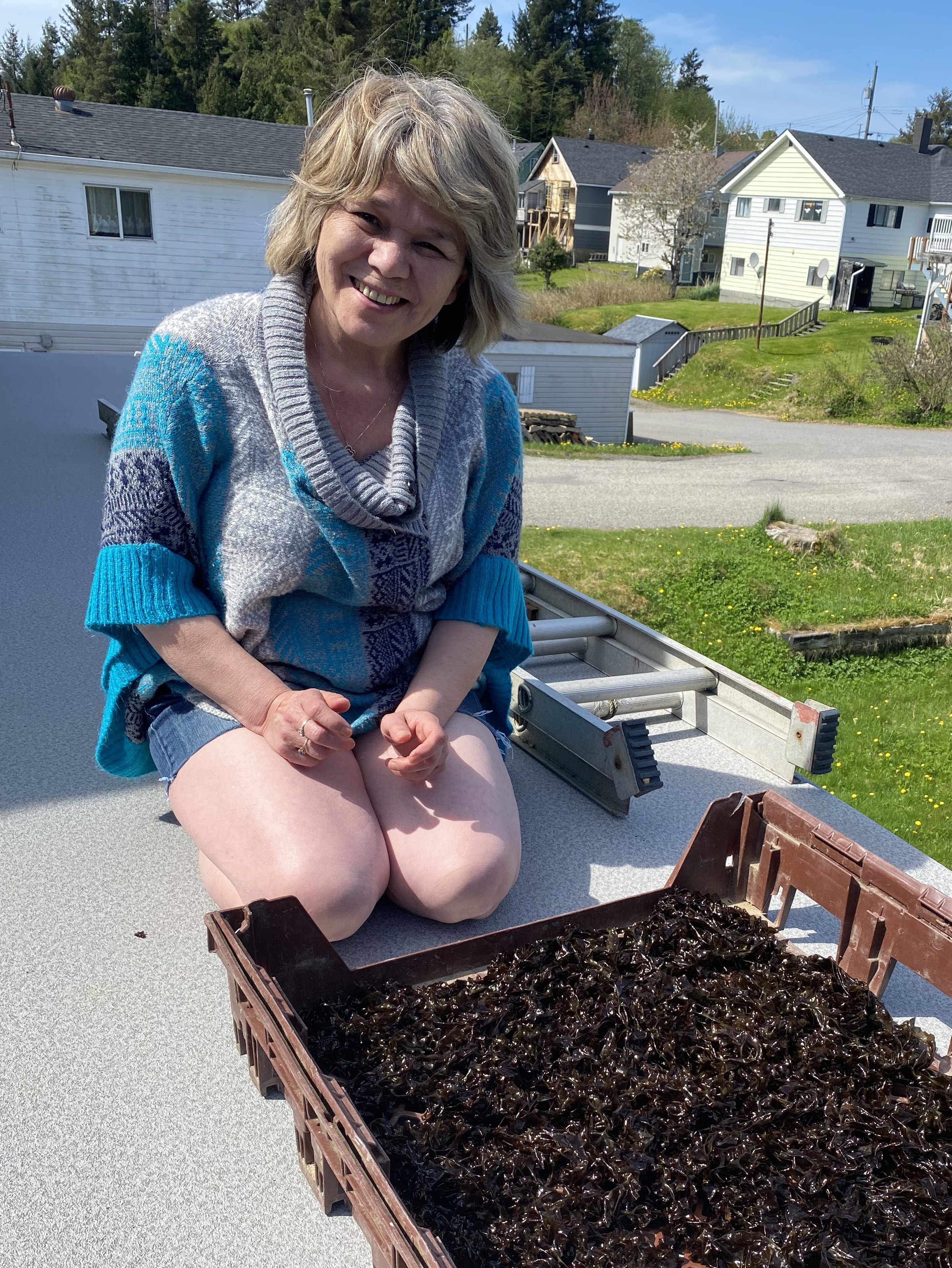
Steve’s dzi’is – grandmother Millie Leask showed him what to use to dry the ła̱’a̱sk into squares – plastic bread crates. We laid out the ła̱’a̱sk into 1 1/2” to 2” thickness on the crates, and let it dry in the sun. As you’re laying the ła̱’a̱sk out, you will most likely find little seashells and other types of seaweed mixed in. As we laid our ła̱’a̱sk out, we cleaned the ła̱’a̱sk at the same time – taking out those shells and other seaweeds. We had a little ła̱’a̱sk left in the sack, so I just added to the squares as they dried. The ła̱’a̱sk shrivels up as it drys, so I used the fresh stuff to fill in the gaps as it dried.
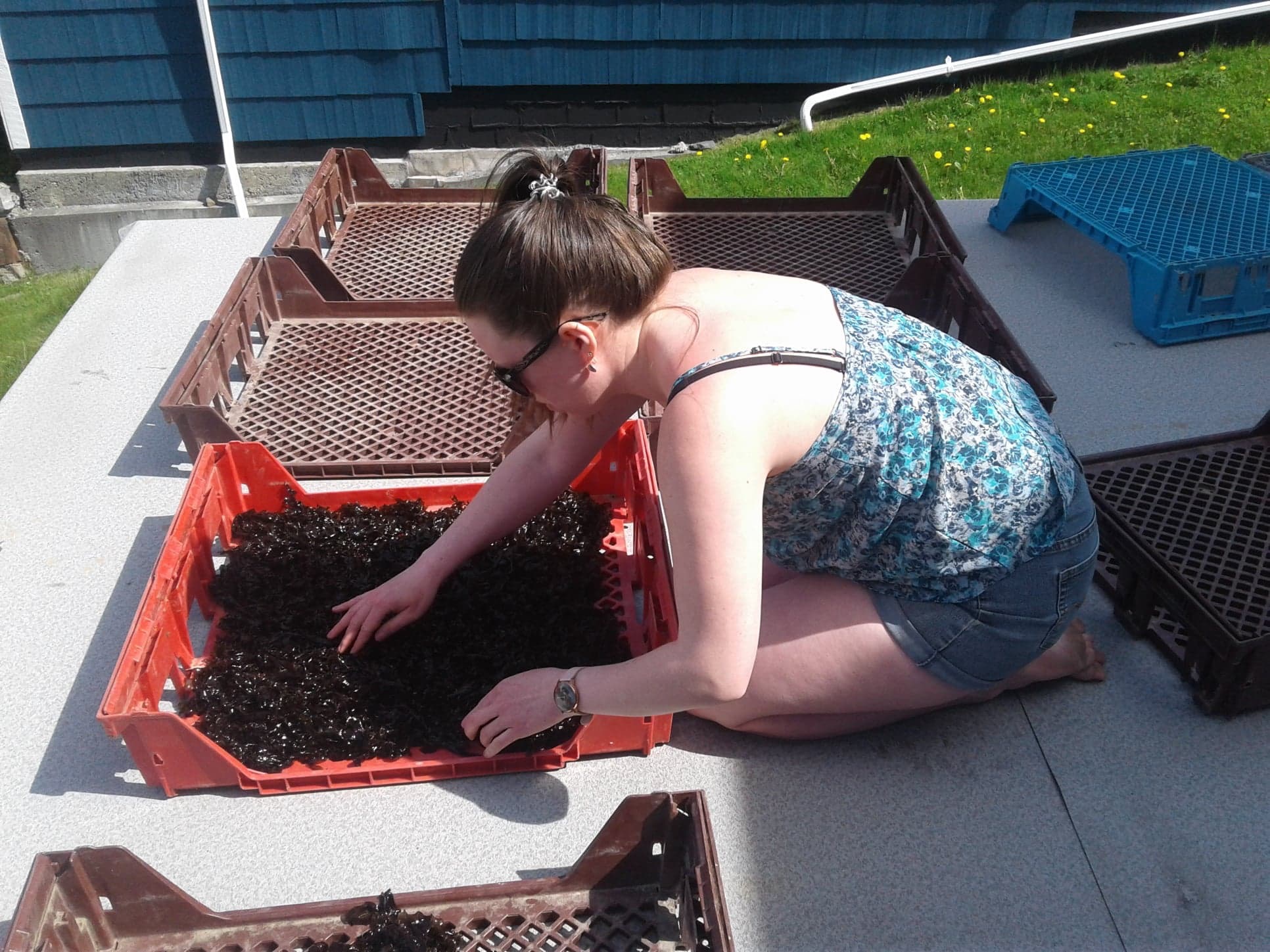
I dried the squares on the inside of the crates, and then Steve told me after the fact (or maybe before?) to dry the ła̱’a̱sk on the underside of the crate. This allows more airflow underneath the ła̱’a̱sk, speeding up the drying time. We laid the squares on the deck and within 2-3 hours, the ła̱’a̱sk was completely dried. Steve and I took a bottle of clear ocean water home with us to spray it onto the ła̱’a̱sk every 20 minutes or so as it was drying. This enhances the flavour of the ła̱’a̱sk. We dried the ła̱’a̱sk into squares, and then stored them in large white ice cream buckets (we got our ice cream buckets from Eddies News, for something like $1.50 a bucket).
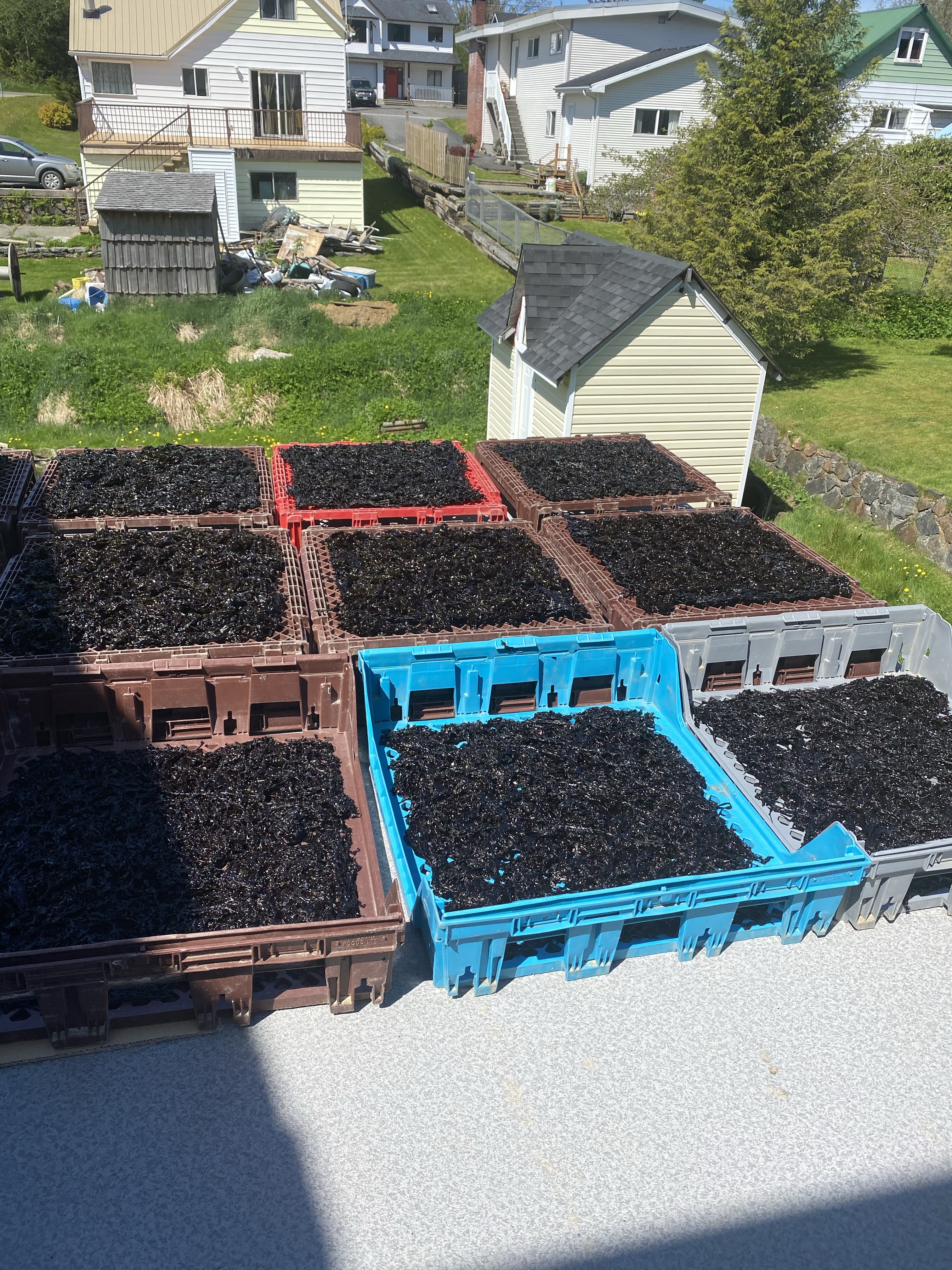
Our next adventure will be to figure out chopped ła̱’a̱sk! We have a Hartley Bay cook book that Steve’s mama Ruby gave us that has the traditional method of making chopped, but we haven’t quite tried it yet. We’ll save that for another blog.
T’oyaxsut nüün Mr. Campbell for providing the audio pronunciation for this blog post!
S&L – May 31, 2020
Good harvesters! Every year is a new learning experience!
Millie would be so proud❤She loved fresh la’ask with gouatsee in a cup of hot water.. .and yaanst!!
We will burn some for her one day!
Copper is the greatest mascot 🐶